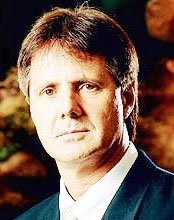MANAUS, Brazil, (Reuters) – Thirty years after he first visited Brazil’s Amazon to observe natural gas seeps, geologist Marcio Mello is back to fulfill what he gleefully calls his “destiny” — to lead a rush for the region’s oil.

Mello, chief executive of the recently listed firm HRT, has convinced a range of investors — including one of Russia’s top energy firms — that the vast and remote rain forest is a promising source for oil despite decades of production there and enormous environmental challenges.
With the development of Brazil’s most prolific offshore reserves currently on hold and concerns growing about political intervention at state-led Petrobras, HRT has become a new avenue for investors to tap into Brazil’s oil boom.
“We found so much gas in the Amazon that it stayed in my DNA. Since then it’s been in my DNA that I had to come back here — I’ve found my destiny!” said Mello, 57, who speaks about sedimentary basins and rock formations with an exuberant, almost preacher-like fervor.
After a 24-year career with state oil company Petrobras, Mello went on to create several petroleum geology consulting firms including HRT, which later bought rights to develop oil in the Amazon region known as the Solimoes Basin.
It is also exploring for oil off the coast of Namibia, an area Mello says is geologically similar to Brazil’s Santos Basin that is home to the country’s biggest crude discoveries.
HRT’s shares are up around 13 percent since it went public in October 2010, compared to a drop of more than 10 percent in Brazil’s benchmark Bovespa index over the same period.
Geologists have for years known about the oil potential of the Brazilian Amazon. But Petrobras did little to expand in the area after its first foray in the 1980s, focusing instead on offshore production that now provides the lion’s share of Brazil’s oil.
Petrobras’ dominance of the country’s exploration and production sector meant it was the only oil firm with significant output in Brazil’s Amazon. That will change this year, when HRT and its partner company Petra begin their first output.
The biggest challenge for HRT, experts say, will be the logistics of pumping oil from an isolated jungle region without harming the sensitive environment.
“The Amazon is a complex and expensive place to work. Everything that we take to the site we have to take back out. But our oil is the best oil in the Southern Hemisphere,” Mello said during an event last week in the Amazon city of Manaus, referring to the high-value light oil held in the area.
To reduce the impact on the forest, rigs have to be separated into more than 500 pieces and flown by helicopter to drilling sites. Every time a rig moves to a new place, that process starts again.
Flexible pipelines, which wind as much as 20 kilometers (12.4 miles) around hills and through vegetation, transport crude from the wells onto river barges.
ENVIRONMENT
CHALLENGE
HRT says the operations will not spark the problems created in other parts of the Amazon such as Peru, where indigenous groups have protested against gas drilling, or in Ecuador, where oil production sparked a long-running legal battle.
This is in part because Petrobras operations have had a relatively small ecological impact, and because HRT has partnered with a local conservation group to help fund forest protection and create jobs in the area.
Despite its potential for damage, environmentalists do not consider the oil industry a primary threat to Brazil’s Amazon — most instead focus on ranching, logging and agriculture that fuel deforestation.
“But if we get a major oil spill, it’ll be a very different story,” said Philip Fearnside, an ecologist at the National Institute for Research in the Amazon.
